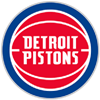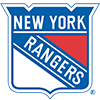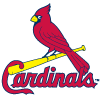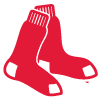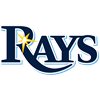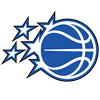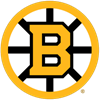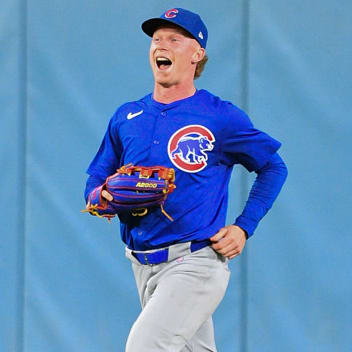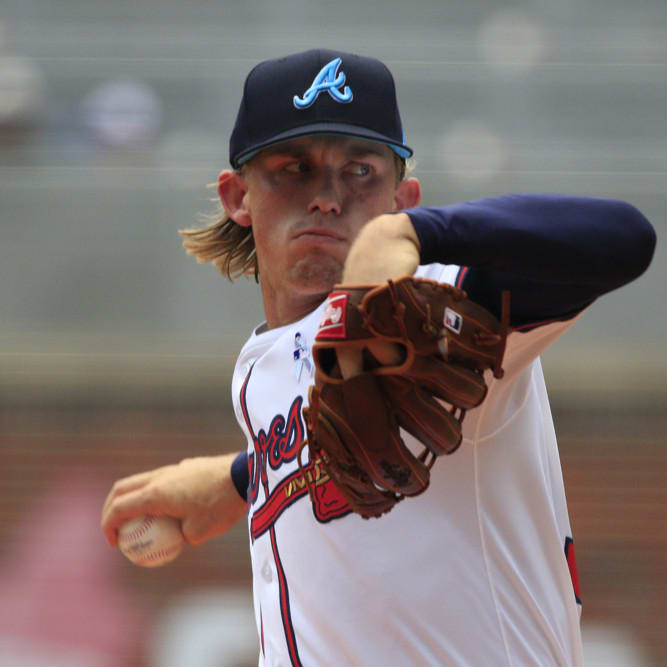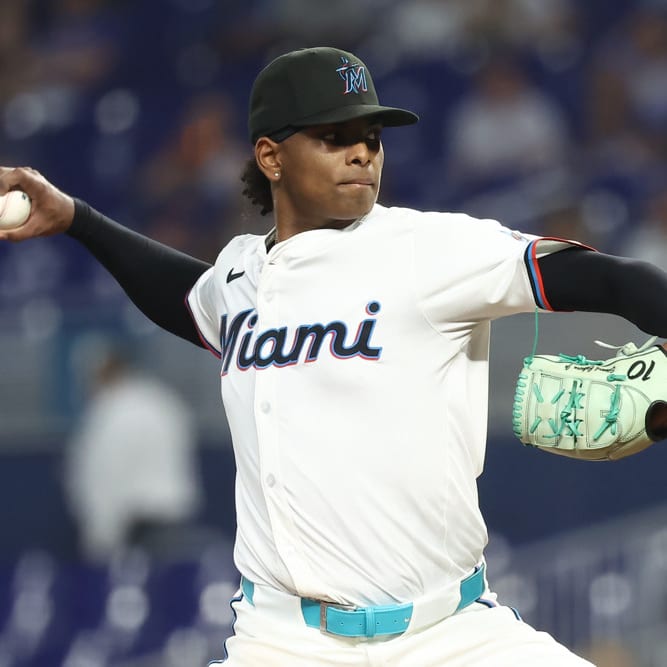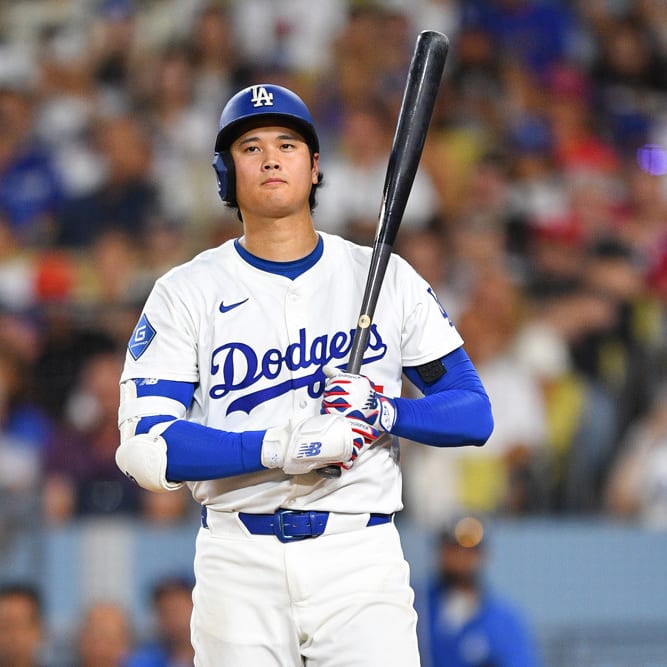For the third year in a row, I will be going division by division, providing analysis on every fantasy-relevant prospect in baseball while also ranking those prospects in their respective systems. This means there will be 20-plus prospects ranked in certain systems and less than 10 prospects ranked in others. There is no point in listing an irrelevant prospect just to reach an arbitrary total of 10, 20 or 30. Similarly, it is unfortunate to not include information on highly relevant prospects just because that prospect was not one of his team's 10 or 20 best.
The fifth installment takes us to the 105 prospects you need to know in the National League Central.
I wrote the outlooks for most of the guys in the top 250 or so of the top 400 prospect rankings, so if you want more in depth analysis on someone, check out their player profile. Feel free to ask me any prospect-related questions in the comments section or on Twitter.
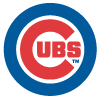 CUBS
CUBS
This is one of those systems where I could have written up just a dozen or so guys and had my bases pretty well covered, but there were a handful of guys I'm lower on who could be in the big leagues fairly soon that I wanted to touch on. It's the mark of a bad farm system when the top guys are all from the most recent draft class, and that is the case with the Cubs. To be fair, they nailed
For the third year in a row, I will be going division by division, providing analysis on every fantasy-relevant prospect in baseball while also ranking those prospects in their respective systems. This means there will be 20-plus prospects ranked in certain systems and less than 10 prospects ranked in others. There is no point in listing an irrelevant prospect just to reach an arbitrary total of 10, 20 or 30. Similarly, it is unfortunate to not include information on highly relevant prospects just because that prospect was not one of his team's 10 or 20 best.
The fifth installment takes us to the 105 prospects you need to know in the National League Central.
I wrote the outlooks for most of the guys in the top 250 or so of the top 400 prospect rankings, so if you want more in depth analysis on someone, check out their player profile. Feel free to ask me any prospect-related questions in the comments section or on Twitter.
 CUBS
CUBS
This is one of those systems where I could have written up just a dozen or so guys and had my bases pretty well covered, but there were a handful of guys I'm lower on who could be in the big leagues fairly soon that I wanted to touch on. It's the mark of a bad farm system when the top guys are all from the most recent draft class, and that is the case with the Cubs. To be fair, they nailed the 2018 draft, but they needed to after having little success in recent drafts and international signing periods. There is some low-probability upside in the lower levels of this system, but it is pretty clearly a bottom-10 system and may still be in the bottom five.
1. Nico Hoerner, 2B/OF, 21, High-A
More loud contact by #CubsNico Hoerner. Dude barrels everything. pic.twitter.com/BUV21SyKxV
— Mike Rosenbaum (@GoldenSombrero) November 8, 2018
Evaluators fell in love with Hoerner's hit tool in the Arizona Fall League, and while his shortstop defense received the opposite evaluation, his bat should be enough to make him an everyday player. He lacks impact power, but could steal 20 bases annually while hitting .280 or .290.
2. Brennen Davis, OF, 19, Northwest League
An AZL scout told me he prefers Davis to Jordyn Adams, which should give you a sense of his ceiling. He did everything I'd want a raw, two-sport athlete to do in his brief debut. If his hit tool ends up being legit, he could develop into a five-category monster (25-homer, 30-steal potential), but there is a ton of risk here.
3. Cole Roederer, OF, 19, Low-A
The Cubs crushed it with their first three picks in the 2018 draft, and while I'm lowest on Roederer of the trio of hitters, any of the three could be their top ranked prospect after the 2019 season. His steals oversell his speed slightly, but his bat could carry him.
4. Brailyn Marquez, LHP, 20, Low-A
Brailyn Marquez' night is over after 6 innings with 1 earned run and 7 strikeouts (featured below) pic.twitter.com/y86Hkx8nfx
— Eugene Emeralds (@EugeneEmeralds) August 15, 2018
By far the best pitching prospect the Cubs have on the farm, Marquez has an excellent frame (6-foot-4, 185 pounds) and a mid-90s fastball. He also has an above-average breaking ball and a changeup that will flash average. If his secondary pitches improve slightly in the coming years, he has the command to be a mid-rotation starter.
5. Miguel Amaya, C, 20, High-A
#Cubs Prospect Thread: C Miguel Amaya19-year old Panamanian came off a strong defensive debut stateside in 2017, and his bat broke out in a big way the 1st half of 2018, leading to an invite to the Futures Game and appearances on multiple midseason Top 100 prospect lists.1/ pic.twitter.com/7j4pc3vwas
— Michael Ernst (@mj_ernst) January 20, 2019
Amaya has the look of a glove-first catcher who will do enough with the bat to be at least a high-end No. 2 fantasy catcher in three or four years. He should hit 15-plus homers while getting on base at a solid clip, but I don't expect him to be better than a .245 or .250 hitter.
6. Richard Gallardo, RHP, 17, AZL
Venezuelan righty Richard Gallardo struck out 6 of 8 batters he faced by my count, 90-93 with present above avg CB, 16 year old 2018 eligible pic.twitter.com/qizI7jeD1j
— Kiley McDaniel (@kileymcd) February 21, 2018
I think the general consensus that the 6-foot-1 Gallardo is the No. 2 pitching prospect from the 2018 J-2 class (behind Osiel Rodriguez of the Yankees) is correct. Gallardo lacks Rodriguez's ceiling, but he has a higher floor – I expect the Cubs to aggressively assign him to the AZL as a 17-year-old. If his low-90s fastball ticks up this year or next, so will his stock.
7. Zack Short, SS/2B, 23, Triple-A
If you play in OBP or points leagues, Short is much more relevant than he is in standard roto. Think of him as Isan Diaz but without a clear opportunity for playing time. He can handle shortstop, but he is not a plus defender there.
8. Luis Verdugo, SS/3B/2B, 18, AZL
Verdugo obviously struggled to put up impressive statistics as one of the AZL's youngest players last year, but evaluators came away impressed on the whole. The selling point with Verdugo, who was a high-profile J-2 signee out of Mexico in 2017, is that he could grow into 20-plus homer power. It's tough to say where he will end up defensively – right now he is fine at shortstop, but with fringe-average speed as an 18-year-old, we can't rule out a move to third base or second base.
9. Edmund Americaan, OF, 22, Low-A
The Cubs gave $208,950 to Americaan as a junior college outfielder in the 35th round of the 2018 draft. He is a plus runner who can handle center field. The question is, will he do enough with the bat to become an everyday player? He will need to work on getting the ball in the air more in his first full season.
10. Jose Lopez, OF, 17, Dominican Summer League
Lopez was the Cubs' top signee (in terms of dollars) from the 2018 July 2 international signing class. He received $1.5 million, but will likely debut in the DSL, as his swing needs a lot of refinement. His easy plus speed is the top selling point, but he could also develop above-average power.
11. Reivaj Garcia, 2B, 17, AZL
After Hoerner, Garcia might have the next-best hit tool in this entire system. He will likely end up at second base as an average defender, so his bat needs to carry him. Garcia currently projects to have below-average power, so he will work in the coming years to do more damage on contact without sacrificing his ability to hit for average.
12. Riley Thompson, RHP, 22, Low-A
Thompson, who received $200,000 after the Cubs selected him in the 11th round last year, has an electric fastball that can touch triple digits and a slider that has a chance to develop into a 70-grade offering. Those two pitches will carry him to the big leagues as a reliever, but if he can improve his changeup, he could be a No. 3 starter.
13. Nelson Velazquez, OF, 20, Low-A
Velazquez has big raw power and sneaky speed, but he was overmatched by Low-A pitchers last season after impressing in rookie ball in 2017. Let's see how he does in a return trip to the Midwest League in his age-20 season.
14. Jonathan Sierra, OF, 20, Low-A
Sierra has a classic right-field profile and is a left-handed hitter. He probably needs to start to do more damage this year in order to remain on this list, as he has been a slightly below league-average hitter each of the last two years against short-season pitchers.
15. Aramis Ademan, SS, 20, High-A
Ademan gets ranked quite a bit higher on real-life lists, but none of his fantasy-relevant tools project as better than 50-grade (average), and it's possible none of them even end up being that good. He will look to up his value in a return to the Carolina League.
16. Jimmy Herron, OF, 22, High-A
Herron supposedly needed Tommy John surgery when he fell to the Cubs in the third round of last year's draft, but he instead went out and played in the AZL and Midwest League after signing for $520,000. Perhaps the procedure has just been delayed or perhaps the reporting that he needed TJS was incorrect. Either way, Herron's plus speed will drive any future fantasy value. He will need to hit enough to play everyday in center field, otherwise he will be a fine fourth or fifth outfielder.
17. Adbert Alzolay, RHP, 24, Triple-A
He has a mid-90s fastball when he is on, as well as a quality breaking ball. He is also one promotion away from the big leagues in an organization that lacks quality rotation depth. However, I think his fringe changeup and command will lead to trouble if he faces big-league hitters as a starter. He fits best as a reliever long term.
18. Justin Steele, LHP, 23, Double-A
As a 6-foot-2 lefty with a low-90s fastball, Steele is interesting, even though he likely ends up as either a reliever or a swing man. He missed most of 2018 recovering from TJS, but could reach the big leagues in the second half of this year. He needs to show more consistency with his secondary offerings.
19. Cory Abbott, RHP, 23, Double-A
Abbott's fastball and slider (both of which could be plus pitches) will get him to the big leagues, but if he can improve one of his curveball or changeup, he could be a No. 4 starter sooner or later. He had a lot of success at Low-A and High-A last year and could be ready for the big leagues in late 2019 or early 2020.
20. Paul Richan, RHP, 22, High-A
The Cubs took Richan with the 78th overall pick in the 2018 draft, giving him a little more than half the slot value there, which allowed them to afford Roederer with the 77th overall pick. Richan has a back-end starter's pitch mix, but could move quickly.
21. Jose Albertos, RHP, 20, Low-A
From a stuff standpoint, Albertos should be higher on this list, but he was awful last year and things kind of snowballed on him. He needs to throw more strikes and it all starts with locating his fastball early in the count. His mid-rotation ceiling is not high enough for him to be worth a stash at this stage.
 REDS
REDS
This system is very top heavy. The gap between the fourth-best prospect and the eighth-best prospect in this system is gigantic. After the top nine or so, there is very little to see here. Trading players like Jeter Downs and Shed Long may not come back to bite the Reds, but they are fully committed to contending at this point. They won't be picking in the top five again anytime soon (if they do, something went very wrong), and don't have a good track record on the international market, so once the top three guys on this list graduate, the pipeline may dry up.
1. Nick Senzel, OF/3B/2B, 23, Triple-A
Let's see what Nick Senzel's up to. 👀 #RedsMiLBpic.twitter.com/j36USTh1FV
— Cincinnati Reds (@Reds) June 22, 2018
From a talent/skills perspective, I have no worries with Senzel and think he could be a second-round fantasy pick in his peak years. His vertigo issues need to be factored in, but his talent and proximity to the big leagues make him a top-10 prospect for me. There have been reports that he is the favorite to win the center field job in spring training. The Reds should be widely commended if they go that route, but as an analyst, I should note that this would be a rare decision by a big-league front office, to forego a year of team control in order to put winning first. What a novel concept.
2. Jonathan India, 3B/2B/SS, 22, High-A
2018 #Reds first-rounder @jonathan_india hit his first homer for @DragonsBaseball on Saturday. He's batting .294 (5-for-17) in five games at Dayton.#RedsMiLB 🐉 pic.twitter.com/KAZnwJtAdO
— Cincinnati Reds (@Reds) August 5, 2018
I thought his surface stats at Low-A could lead to an unwarranted discount in first-year player drafts, but nobody is fooled – he has steadily gone very early in the FYPDs I have seen. He will be an exit velocity monster, allowing him to hit .265 or .270 despite a pull-heavy approach. India has the power to hit 30-plus homers and the speed/instincts to swipe double-digit bases.
3. Taylor Trammell, OF, 21, Double-A
Taylor Trammell, who won the #FuturesGame MVP last year after homering and tripling, represents the #Reds on our 2019 Top 10 OF Prospects list: https://t.co/8BUYc46z52pic.twitter.com/fdHfBAD2SR
— MLB Pipeline (@MLBPipeline) January 24, 2019
Everything has come fairly easy for Trammell to this point in his pro career. He has 30-plus steal upside, solid plate skills and more raw power than he has shown. However, he has not had to make many adjustments, so this year at Double-A will teach us a lot.
4. Hunter Greene, RHP, 19, High-A
1-2-3 2nd for Hunter Greene. 2 more Ks, finishing w this 3-2 breaking ball. 97-99 mph w the FB pic.twitter.com/ZgriJAK4hu
— Jonathan Mayo (@JonathanMayo) April 9, 2018
Greene's 2019 could go any number of ways, as his 2018 ended with him suffering a sprained UCL but opting not to undergo Tommy John surgery. It is possible he looks great this spring, heads to High-A and dominates before finishing the year on a high note with a taste of Double-A. It is also possible he gets TJS in April or May. Frontline upside and immense short-term risk.
5. Tony Santillan, RHP, 21, Triple-A
Much to the chagrin of #Reds fans, right-hander Tony Santillan didn't make our list of #MLB's Top 100 prospects. But he was close. Here's a look at each #MLB team's best non-Top 100 prospect: https://t.co/1fNOaIdEpTpic.twitter.com/kpXcUSXczU
— MLB Pipeline (@MLBPipeline) February 1, 2019
Santillan cut his walk rate after making the jump from Low-A to High-A, and then improved his strikeout rate after making the jump from High-A to Double-A. For a big righty with a plus-plus fastball, he still doesn't strike out as many batters out as we would hope. His slider projects as a future plus pitch, but the changeup still needs to improve if he is going to be a work horse in the big leagues.
6. Mike Siani, OF, 19, Low-A
A glove-first center fielder whom the Reds gave $2 million to in the fourth round of last year's draft, Siani has a chance to be a Lorenzo Cain/Ender Inciarte type whose everyday at-bats lead to valuable counting stats and whose plus speed leads to top-150 fantasy value. That's the upside, but there's a chance he won't hit enough to get there.
7. Tyler Stephenson, C, 22, Double-A
The No. 11 overall pick in 2015, Stephenson had been slowed by injuries early in his career, but had a breakout year at High-A as a 21-year-old. He has a lot of the characteristics (solid on-base skills, double-digit homer pop) we associate with catching prospects who have a chance to be universally rostered in two-catcher leagues some day, but are unlikely to be top-10 fantasy options at the position. He will stick defensively.
8. TJ Friedl, OF, 23, Double-A
Friedl is a high-probability fourth outfielder with enough leadoff hitter skills to be interesting. His plus speed and proximity to the big leagues should keep him on dynasty-league radars until he reaches a level where he is overmatched at the plate.
9. Mariel Bautista, OF, 21, Low-A
Bautista has sexy tools (plus raw power, plus speed) and took full advantage of the hitter-friendly conditions of the Pioneer League last year – as a 20-year-old no less. He has made contact at an elite clip, but is also going to be making his full-season debut as a 21-year-old, so there is a lot we don't know about how his skills are going to translate against age-appropriate pitching.
10. Jose Siri, OF, 23, Double-A
Siri has plus raw power and at least plus speed, but his hit tool is well below average. He hasn't shown much of an ability to make adjustments either, and turns 24 in July.
11. Vladimir Gutierrez, RHP, 23, Triple-A
Gutierrez has a plus curveball and a low-90s fastball that should be pretty hittable in the big leagues. His changeup will need to really improve, otherwise he will likely go to the bullpen, where his fastball might be more effective in short bursts.
12. Stuart Fairchild, OF, 23, High-A
Fairchild was the No. 38 overall pick in 2017 and an argument could be made that he shouldn't have even been listed here. He has all the makings of a tweener – not enough bat for a corner, and not enough glove for center field. His above-average speed and draft pedigree are the two things he has going for him.
13. Jose Garcia, SS, 20, Low-A
Garcia, who received $5 million out of Cuba in 2017, underwhelmed on both sides of the ball in his debut last year. The cultural transition cannot be overlooked for players his age making the jump to the U.S., but this will be his final appearance on this list if he does not show significant improvement this year.
14. Hendrik Clementina, C/1B, 21, High-A
Clementina has much more offensive upside than Stephenson, but he is also highly unlikely to be a passable defensive catcher in the big leagues. He is listed at 6-foot, 250 pounds, and that might be generous. However, he has big raw power to all fields, so we'll see how everything shakes out.
15. Michael Beltre, OF, 23, Double-A
There is a lot to like with Beltre – plus raw power, plus speed, very willing to take a walk – but we are still waiting for him to join the launch angle revolution. Without a swing change, he simply won't hit the ball in the air enough for the rest of his tools to matter.
16. Ibandel Isabel, 1B, 23, Double-A
If you play in a minor-league stats league, Isabel is extremely relevant. He has hit 64 home runs over the last two seasons. However, he is a right-handed hitter who resides at the bottom of the defensive spectrum and struck out 36.2 percent of the time last year at High-A, so he will likely stall out before reaching the big leagues.
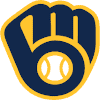 BREWERS
BREWERS
This system looks about as good as it should, given where the big-league club is at. They cashed in three of their top prospects for Christian Yelich and also graduated pitchers like Josh Hader, Corbin Burnes and Brandon Woodruff in recent years. There is a massive drop off from the top guy to the second guy on this list, so in that sense it is a top-heavy system, but it's really just a one-man system in terms of high-probability impact players. Since they are very active on the international market and go after toolsy hitters in the draft, there are plenty of interesting lottery tickets in the lower levels, albeit with significant bust potential.
1. Keston Hiura, 2B, 22, Triple-A
Here's #BrewersKeston Hiura going ya-ya today. Just love how he lets FBs travel and shows power to all fields. pic.twitter.com/mQ5vRULSpJ
— John T Eshleman (@2080_John) October 26, 2018
Hiura doesn't have any weaknesses from a fantasy perspective. He should hit for a high average, bang out 25 homers and steal 10 bases early in his big-league career, eventually profiling as a No. 2 hitter. He will probably be ready for big-league pitching in June, but may not have a place to play.
2. Corey Ray, OF, 24, Triple-A
If only we could be semi-confident Ray would hit even .250 in the big leagues, he would be viewed as a legitimate 30/30 threat. If he got dealt to a rebuilding club, he would at least return value in OBP leagues. Maybe he can improve his contact skills, but at 24, the odds are against him.
3. Tristen Lutz, OF, 20, High-A
Tristen Lutz HR (9) #TRatspic.twitter.com/8bZyCEu9gZ
— Brewers Farm (@BrewersFarm) July 14, 2018
Lutz has big raw power and came on strong after the weather heated up in the Midwest League last year (.270/.356/.471 with seven HR, seven SB over his final 236 PA). The R/R corner guys are always risky, but Lutz could develop into a quality No. 5 hitter in the big leagues.
4. Brice Turang, SS, 19, Low-A
Turang seems like a guy with a pretty high floor, but that is a dangerous game to play, because if we're wrong about the hit tool (most believe it will be at least a 55), he's a utility player. If he maxes out he could hit .280 or .290 with 20-plus steals annually. Basically, he would be the good version of Orlando Arcia.
5. Zack Brown, RHP, 24, Triple-A
Don't sleep on Brown in deeper dynasty leagues. He's pretty close to the majors, is elite at generating groundballs, and pitches with confidence and attitude. His plus curveball is his finishing pitch when he needs a strikeout, and his changeup and command are good enough for him to be a No. 3/4 starter if he reaches his potential.
6. Mauricio Dubon, 2B/SS, 24, Triple-A
"Will he still have the same swing" - yes sir 😏 pic.twitter.com/wU4PjyDbsd
— Mauricio Dubon (@Mauriciodubon10) December 17, 2018
Dubon has a beautiful swing, excellent makeup and is capable of playing all over the infield. Unfortunately I think his lack of power and lack of plus defense at shortstop equates to a utility infielder. He is an above-average runner and has good instincts on the bases, so he could still be useful in NL-only leagues if that is indeed his role.
7. Carlos Rodriguez, OF, 18, Pioneer League
Rodriguez has one of the best hit tools in this system and has a chance to be a plus defensive center fielder with plus speed. His stock should continue to climb, especially after getting to play in the Pioneer League this year.
8. Joe Gray, OF, 19, AZL
Gray has a ton of upside as a power/speed outfielder, but the Brewers were able to get him with the 60th overall pick in 2018 because many evaluators pan the hit tool. Extreme risk that he never hits with extreme upside if he does.
9. Eduarqi Fernandez, OF, 17, Dominican Summer League
Fernandez is a lot like Rodriguez was a year ago – a top J-2 signee who should stick in center field and has plus speed with a chance to hit. However, as with Rodriguez, Fernandez is probably at least a year away from being a worthwhile dynasty stash.
10. Mario Feliciano, C, 20, High-A
Feliciano is a fascinating prospect. The Brewers liked him so much that they sent him to High-A as a 19-year-old last year – something that is almost unheard of for catching prospects. Predictably, he struggled there, but if he impresses in a return trip, he should shoot up lists, as he has significant upside on both sides of the ball.
11. Felix Valerio, 2B, 18, AZL
The Brewers clearly targeted Valerio in the Keon Broxton trade. He is kind of a poor man's Luis Santana (now with the Astros) – a short (5-foot-7) second baseman who walks more than he strikes out and chips in some power and speed. He will be making his stateside debut this year.
12. Eduardo Garcia, SS, 16, Dominican Summer League
Garcia has a chance to blow up on real life lists in a year or two, as a quality defensive shortstop who looks the part in the field. He could develop into a valuable dynasty-league asset, but we need to see how he does in his pro debut first. There will be very little power, so he needs to hit.
13. Aaron Ashby, LHP, 20, High-A
Ashby was a junior college pick in the fourth round of last year's draft. He has a low-90s fastball, plus curveball and is very deceptive, which is why he was able to be so dominant at Low-A last year. He will need to develop a quality third pitch to reach his ceiling as a mid-rotation starter.
14. Micah Bello, OF, 18, Pioneer League
The Brewers selected Bello, a prep outfielder from Hawaii, with the 73rd overall pick in last year's draft. He has fourth outfielder tools (50 speed, 50 power, not enough defense for CF), so he needs to really hit to beat that projection.
15. Jacob Nottingham, C, 23, Triple-A
A year ago I would have pegged Nottingham as a third catcher whose glove profiles better at first base, but he has reportedly improved enough behind the dish that he could work as a backup catcher. He has huge raw power, but his hit tool is well below average.
16. Lucas Erceg, 3B, 23, Double-A
While Erceg impressed in rookie ball and at Low-A after the Brewers snagged him in the second round of the 2016 draft, he hasn't been better than roughly league average at any stop since, and his stock has dropped as a result. He is quickly turning into an organizational depth piece, and lacks fantasy-relevant tools.
17. Korry Howell, OF/SS, 20, Pioneer League
Howell received $210,000 out of junior college when the Brewers selected him in the 12th round of last year's draft. He impressed with his plus-plus speed in the AZL and could very well put up impressive numbers if he is assigned to the Pioneer League. We won't know how the hit tool plays until he gets to Low-A, but his speed could be very impactful if he hits enough.
18. Je'Von Ward, OF, 19, Low-A
Ward (6-foot-5, 200 pounds) has above-average speed and looks like he should develop plus power, but has completely sacrificed quality contact in order to make "enough" contact. A player with his size and physical tools needs to be pulling and lifting the ball more. If he overhauls his approach and keeps his strikeout rate in check, he would be pretty interesting.
19. Troy Stokes Jr., OF, 23, Triple-A
Stokes has been at least 20 percent better than league average at every full-season stop, but there are flaws in his offensive game that would likely prevent him from having success in the big leagues. He is very pull heavy, strikes out a lot and has consistently posted infield flyball rates above 20 percent and sometimes north of 30 percent.
20. Chad McClanahan, 1B/3B, 21, Low-A
McClanahan was a breakout candidate a year ago, and while he was impressive in a return trip to the Pioneer League, he was much worse at Low-A than I expected. He has significant pedigree and the raw offensive tools of a classic corner bat, so I'll give him one more chance to show improvement against full-season pitching.
21. Larry Ernesto, OF, 18, AZL
Ernesto was a high-profile international signee in 2017. He has an appealing combination of power and speed, but the early returns on his hit tool are pretty troubling. Still, if he starts to make strides in that department, it will be time to take the plunge in deeper leagues.
22. Lun Zhao, RHP, 17, AZL
Zhao is a 5-foot-10 pitching prospect from China. I don't necessarily blame you if that's enough for you to stop reading. However, he already has one of the best curveballs in all the minors, so I will be watching closely to see how his below-average fastball develops in the coming years.
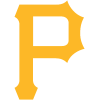 PIRATES
PIRATES
This system has some assets up top, with a potential first-division third baseman and No. 3 starter leading the way, both of whom are close to big-league ready. However, things fall off in a hurry outside the top five. There are some high-risk/high-reward rookie-level outfielders and a slew of likely fourth outfielders further down the list. The Pirates appear to be in no man's land, with not enough talent to be a serious big-league contender, and not enough on the farm to dream of significantly better days ahead.
1. Ke'Bryan Hayes, 3B, 22, Triple-A
Ke'Bryan Ke'Boom 💥"Is that Charlie Hayes' son? That's Charlie Hayes' son!"#Pirates' Ke'Bryan Hayes got @toriihunter48 all revved up in today's #FuturesGame. Video: https://t.co/YOeU5DEw55pic.twitter.com/VU3SBpnQfV
— MLB Pipeline (@MLBPipeline) July 16, 2018
Hayes spent all of 2018 making a believer out of me. His strengths – excellent hit tool, athleticism, makeup, defense – far outweigh the fact that he currently doesn't hit for impactful power. I think he eventually will hit 20-25 HR annually, which would make him a five-category contributor.
2. Mitch Keller, RHP, 22, Triple-A
#Pirates top prospect Mitch Keller shines in his #SpringTraining debut:2 IP1 H0 R0 BB3 K'sNo. 1 on @Pirates' Top 30 list: https://t.co/ApnAp224p8pic.twitter.com/m0yukKwNNW
— MLB Pipeline (@MLBPipeline) March 18, 2018
I'm not a huge Keller fan (relative to the crowd) because I think he represents everything that's wrong with the way the Pirates develop pitchers. Too much emphasis on the fastball, not enough emphasis on offspeed pitches. He falls into that bin of close-to-the-majors pitchers I think will probably be No. 3 starters. That would be a successful outcome, but may not satisfy the expectations of those who are higher on him.
3. Cole Tucker, SS, 22, Triple-A
And here's a Cole Tucker single up the middle for Pirates fans. pic.twitter.com/DPxF3FyOZP
— Josh Norris (@jnorris427) October 21, 2018
Where should a shortstop who is about a year away from the majors rank if he'll play every day and hit .255 with eight HR and 25-plus SB? That's the dilemma with Tucker. His glove makes him the Pirates' clear shortstop of the future and his speed makes him a legit dynasty asset.
4. Oneil Cruz, 3B/OF, 20, High-A
Jameson Taillon vs. Oneil Cruz, a tall young shortstop acquired in the Tony Watson trade. pic.twitter.com/OmLJLqh3GN
— Adam Berry (@adamdberry) March 9, 2018
There is definitely a chance Cruz goes on to continue to beat the odds against more advanced pitching, emerging as one of the game's top power hitters. At the risk of missing out, I'm going to bet against that happening, since he is 6-foot-6 and has not played above Low-A.
5. Travis Swaggerty, OF, 21, Low-A
Swaggerty has nice tools (20-homer pop, 30-steal speed), but I don't think he'll hit for power while also hitting for a high average. Ideally, he would focus on roping line drives so that he could hit atop a lineup. He will be a slow mover, relative to other first-round college bats.
6. Calvin Mitchell, OF, 20, High-A
If a future left fielder won't be a threat on the bases and lacks plus power, he really needs to hit a ton. Mitchell was good last year, but not great, and his pull-heavy approach and splits against righties are pretty concerning, given the rest of his limitations.
7. Kevin Kramer, 2B, 25, Triple-A
Kramer is "blocked" at second base by Adam Frazier, among others, this spring. However, if he goes back to Triple-A and hits as expected, he will get his shot at some point this season. He isn't a great defender, so he really needs to hit.
8. Juan Pie, OF, 18, Gulf Coast League
Pie comes stateside this year after putting up very impressive numbers in the DSL as a 17-year-old. A 6-foot-2, 170-pound outfielder, he should grow into 20-homer power and is currently an above-average runner. In deeper leagues, he is already worth rostering.
9. Jared Oliva, OF, 23, Double-A
Oliva gets the edge over several other similar outfielders in this system because he has true plus speed that could translate to fantasy value down the road. He is old for Double-A, so he needs to be better than average with the stick to remain relevant.
10. Sergio Campana, OF, 17, Dominican Summer League
The Pirates signed Campana out of Colombia on July 2, 2018 for $500,000. He turns 17 in March, so he probably won't make his stateside debut until 2020. That said, Campana has 20/20 potential long term and has not yet shown the warts that other toolsy outfielders in this system have displayed.
11. Jack Herman, OF, 19, Low-A
While Herman received more than slot value in the 30th round last year, he only received $50,000, so it was quite a surprise when he tore up the GCL to the extent he did last season. These types of post-draft pop-up performances are often just noise, but he was good enough (at everything) to put himself squarely on watch lists this year.
12. Bryan Reynolds, OF, 24, Triple-A
Reynolds, a high-pedigree college hitter from the 2016 draft, was the headliner Pittsburgh received from San Francisco in last season's Andrew McCutchen trade. He has hit over .300 at every stop, though he has typically been on the older side. As things stand, Reynolds seems like a tweener – he could be Albert Almora with worse outfield defense.
13. Lolo Sanchez, OF, 19, High-A
Sanchez has plus speed and some pedigree, but struggled offensively against full-season pitchers last year. His below-average raw power means that he needs to be a high-AVG, glove-first center fielder. Fortunately he is still very young and has time to improve.
14. Jonah Davis, OF, 21, Low-A
Davis received $125,000 in the 15th round of last year's draft, so he was not a typical mid-round pick, but his performance after signing was still surprisingly impressive. He has above-average power and above-average speed, but his strikeout rate (24.5 percent) in rookie ball portends significant contact issues against more advanced pitching.
15. Tahnaj Thomas, RHP, 19, Appalachian League
Thomas was sent from Cleveland to Pittsburgh this offseason in a multi-prospect challenge trade. He is very raw, but impressed with his mid-90s fastball velocity and a promising breaking ball last year in the AZL.
16. Yordi Rosario, RHP, 20, New York-Penn League
Dealt to Pittsburgh from Chicago in the Ivan Nova trade, Rosario has a projectable 6-foot-2, 185-pound frame and excellent command for a pitcher who has not yet pitched above rookie ball. He has a low-90s fastball and quality breaker, but will need to continue improving his stuff to emerge as a valuable fantasy asset. I think he's definitely one to watch.
17. Kevin Newman, SS/2B, 25, MLB
Newman will be battling with Erik Gonzalez in camp for the starting shortstop duties – I prefer Gonzalez but he is not prospect eligible. If Newman were to get 500 PA, he could steal 15 bases, but that's not a very strong selling point.
18. Jason Martin, OF, 23, Triple-A
A likely fourth outfielder who has a chance to hit enough to play every day in left field, Martin was a spare part with the Astros, and was therefore included in the Gerrit Cole trade. Ramon Laureano was once a spare part for the Astros too, but unlike Laureano, Martin's glove/arm won't win him any job battles. The selling point is that he has 15-steal speed.
19. Braxton Ashcraft, RHP, 19, Appalachian League
Ashcraft received close to $2 million after the Pirates selected him in the second round of last year's draft, but has a long way to go to live up to that lofty bonus. He has good size (6-foot-5, 195 pounds), which could allow his low-90s fastball to play as a plus pitch, but his secondary offerings lag well behind.
20. Deon Stafford, C, 23, High-A
Stafford might be the best catching prospect in this system, but he will head to High-A as a 23-year-old, so that is damning with faint praise. He should stick at the position and has the potential to hit 20 homers.
21. Will Craig, 1B, 24, Triple-A
Craig, a first-round pick back in 2016, is getting closer to the big leagues, but the higher he climbs, the less likely it seems that he will be able to hit enough to profile at first base. A 110 wRC+, 23.3 K% and 7.7 BB% as a 23-year-old at Double-A won't cut it, given his lack of defensive utility.
22. Ji-Hwan Bae, SS, 19, New York-Penn League
Bae received $1.2 million to sign with the Pirates about a year ago. He could stick at shortstop and has plus speed, which is enough to get any teenage prospect included in this series. Whether or not he hits enough to be more than a utility player will ultimately determine his fate.
23. Cody Bolton, RHP, 20, Low-A
Bolton, a sixth-round pick from the 2017 draft, has good size (6-foot-3, 185 pounds) and a plus fastball that he has commanded well early in his pro career. His slider and changeup are both useful pitches – if one or both improve he would have a mid-rotation ceiling.
24. Pablo Reyes, 3B/OF, 25, MLB
Reyes is more interesting as a late-round draft-and-hold target than as a dynasty-league target. He is a utility player all the way (plays 3B, 2B, LF, RF), but an injury could open up playing time for him in pockets this season. He makes contact at a solid clip and has a modicum of speed.
 CARDINALS
CARDINALS
This is probably the best farm system in this division, which is not saying much. There are a lot of upside guys and a lot of steady, high-floor prospects on the position player side. There is not much in the way of starting pitching prospects, which is fine, given the amount of rotation options St. Louis has at the big-league level. Their international signings have not been splashy, but they have made several shrewd under-the-radar acquisitions, and last year's Oscar Mercado trade that netted them Jhon Torres appears to be a potential heist.
1. Alex Reyes, RHP, 24, MLB
I will take the over on one game started for Reyes this year and the over on one save for the electric, oft-injured righty. His role almost needs to be fluid given the fact he probably won't log more than 100-110 innings this season. If he has avoided any more serious arm injuries in a couple years, I think he will be a top-15 starting pitcher, but plenty can go wrong between now and then.
2. Nolan Gorman, 3B/1B, 18, Low-A
Nolan Gorman hits his 14th HR pic.twitter.com/4tdcy9lcV3
— VHS (@VanHicklestein) August 21, 2018
Gorman has huge power and significant questions about his hit tool. Strikeouts will always be an aspect of his game, but if he can get his K-rate to settle at around 25 percent in the majors, he could be a star. If it's closer to 35 percent, he will be flawed yet productive. It is too early to say which outcome is more likely.
Royals RHP Janser Lara K's Nolan Gorman on nasty off-speed. pic.twitter.com/jJK2i34Rq7
— Jason Woodell (@JasonAtTheGame) July 16, 2018
3. Jhon Torres, OF, 19, Low-A
💪 🇨🇴 Jhon Torres home run !!!!!!! #U23WorldCup@fcbeisbol@cardinalspic.twitter.com/0PgpMNmzNa
— WBSC ⚾🥎 (@WBSC) October 20, 2018
A prototypical right fielder, Torres uses plus bat speed and his 6-foot-4, 200-pound frame to generate easy plus power. It can be dangerous to get too aggressive with corner-only right-handed hitters who have not yet reached Low-A, but Torres has a high enough ceiling to reward such a gamble.
4. Elehuris Montero, 3B/1B, 20, High-A
Two pieces of solid contact from Elehuris Montero in yesterday's @PeoriaChiefs v @TinCaps game. @Cardinals#Cardinals#MiLBpic.twitter.com/MvF00F8IbW
— Lance Brozdowski (@LanceBroz) July 15, 2018
Montero is very aggressive, albeit very talented, and thus far has been very successful against full-season pitching. Maybe his hand-eye coordination is so good that he will always have success with this approach. I think the ceiling is Yoenis Cespedes (at a corner-infield spot) and the floor is a non-big leaguer.
5. Andrew Knizner, C, 24, Triple-A
Knizner probably has the best current hit tool of any catching prospect, but he won't be getting notable playing time at the big-league level anytime soon. Look for him to return to Triple-A until it gets to the point where there's nothing left for him to gain from being there.
6. Malcom Nunez, 1B/3B, 18, Appalachian League
Nunez is such a mystery. Dominican Summer League scouting intel is tough to come by, and while the offensive output was insane, we already know that he will be a defensive liability. He should be rostered in all formats, but don't be surprised if he underwhelms stateside. Even if he hits as much as people hope, he will carry the Josh Naylor/Willie Calhoun "where can we play him" questions that follow DH prospects in NL farm systems.
7. Justin Williams, OF, 23, Triple-A
Williams was dealt from Tampa Bay to St. Louis in the Tommy Pham trade. As a teenager, the big question was whether he would hit enough to get to all his raw power. Now the question is whether he will ever hit for enough power to play in an outfield corner – it seems he sacrificed hard contact for consistent middling contact. He broke his hand this offseason by reportedly punching a TV.
8. Ramon Urias, 2B, 24, Triple-A
The older brother of Padres prospect Luis Urias, Ramon was playing in Mexico until recently. He absolutely destroyed Double-A pitching before receiving a promotion to Triple-A late last season. There, his production fell off a bit. He does not walk as much as his brother, but he makes contact at a similarly excellent clip.
9. Luken Baker, 1B, 22, High-A
By now you all know the drill with R/R first base prospects – the offensive bar to clear is extremely high. The Cardinals thought enough of Baker that they selected him with the 75th overall pick in last year's draft, and he held up his end of the bargain in his pro debut. If he is 30 percent better than league average at High-A, I would scoop him up.
10. Dylan Carlson, OF, 20, Double-A
Carlson, the 33rd overall pick in 2016, played 99 games at High-A last year as a 19-year-old and held his own. He is better in OBP and points leagues, but he is relevant in all formats thanks to his ability to make contact at a high clip and 20/10 upside.
11. Ryan Helsley, RHP, 24, Triple-A
Helsley seemed destined to make his big-league debut in the second half last year before experiencing shoulder fatigue in June, which cut his season short. He has a mid-90s fastball and several useful breaking balls, which gives him a chance to start or relieve in high-leverage spots. Given the Cardinals' rotation depth, Helsley will need to throw more strikes this year to get a look as a starter.
12. Ivan Herrera, C, 18, Appalachian League
Herrera is a bat-first catcher, but the bat has a chance to be special enough that we should be tracking him even before he reaches a full-season league. He needs to work on pretty much everything behind the plate, but only needs to get to solid-average defensively, and he has age on his side.
13. Tommy Edman, 2B/SS, 23, Triple-A
Edman is a Cardinals prospect that Tony La Russa and Mike Matheny could be proud of. He's scrappy, he's a gamer, but he also has a knack for making quality contact and working the count, which gives him a chance to be a leadoff hitter if he maxes out. He gets good reads on the bases and could steal 20 bases with everyday work. The most likely scenario is that he is just a high-end utility infielder.
14. Lane Thomas, OF, 23, Triple-A
Thomas is very close to the big leagues in an organization that has no shortage of outfield depth. That said, he has 20/20 upside and could be an above-average center fielder. The reason he is not higher on this list is because he probably won't hit for a particularly high average or get on base at a high clip, which could relegate him to a career as an extra outfielder.
15. Joerlin De Los Santos, OF, 18, Gulf Coast League
De Los Santos was too advanced for the DSL last year, which is why his stat line is so appealing. He is a plus runner, but we won't have a good idea how the rest of his fantasy-relevant skills translate until he faces more advanced pitching this season.
16. Genesis Cabrera, LHP, 22, Triple-A
The Cardinals liked Cabrera's stuff so much that they were willing to allow him to be the headliner in the Pham return from Tampa Bay. They clearly wanted to move Pham and didn't have much leverage, but it also speaks to the value of a nasty left-handed reliever under team control for 6-to-7 years. Cabrera could be getting big outs in the late innings for the Cardinals this summer.
17. Scott Hurst, OF, 23, High-A
A third-round pick in 2017, when the Cardinals had a tiny bonus pool as part of their punishment for hacking into the Astros' database, Hurst has performed better than anyone could have hoped, but he is still old for his level and has modest tools. His ability to do a little bit of everything makes him worth tracking until he reaches a level where he stalls out.
18. Leandro Cedeno, 1B/OF, 20, Low-A
Cedeno has mammoth raw power, very little defensive utility, and is pretty old for a player with that profile who has not yet played at Low-A. He will likely continue to rake until he gets to High-A or even Double-A, and will need to mash at every level to be a realistic everyday big leaguer.
19. Griffin Roberts, RHP, 22, Serving 50-game Suspension
Roberts is one of those high picks (the Cardinals gave him slot value at 43rd overall last year) that everyone kind of agrees is a future reliever but who is still being developed as a potential starter. His slider was one of the best offspeed pitches in the draft and he gets to the upper-90s with his fastball when working in relief. He will be ready for High-A once he is done serving a 50-game suspension for testing positive for marijuana, and will move quickly once the Cardinals officially transition him to the bullpen.
20. Adanson Cruz, OF, 18, Gulf Coast League
Cruz is not oversized, but he also probably won't be a center fielder, so it is all about how much damage he does with his bat. He had an impressive showing in the DSL last year, and if he starts getting to more power in games this year, he could enter the top 400.
21. Victor Garcia, OF/1B, 19, Appalachian League
Garcia received $1.5 million in the 2016 J-2 signing period, and while he has made more contact than I expected, he has not started to get to his huge raw power in games because he hits the ball on the ground too often. At 6-foot-3, 235 pounds, he is going to need to hit and hit for power, but he has the tools to do just that.
22. Carlos Soler, OF, 19, Appalachian League
Soler had a really impressive offensive showing in the GCL last year. Of all the corner outfield prospects on this list, he has the least pedigree, but if he continues to do this much damage at the plate, people will start to take notice.









